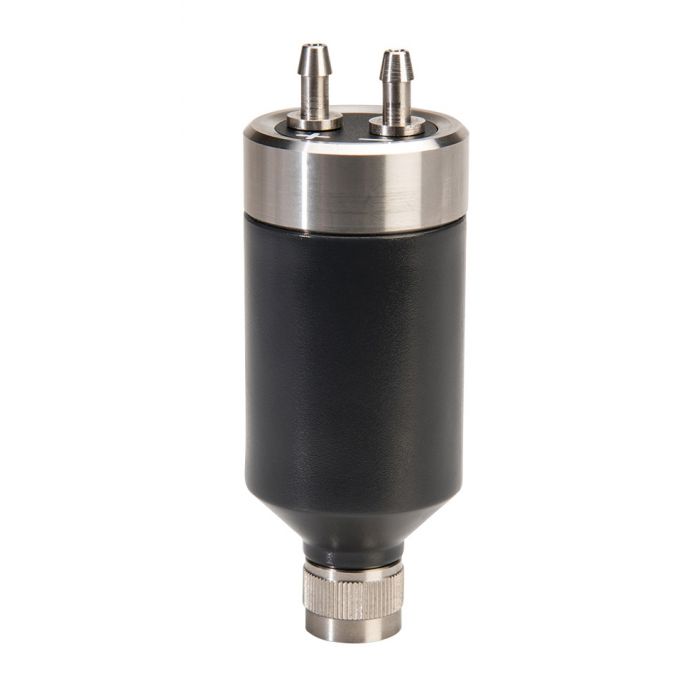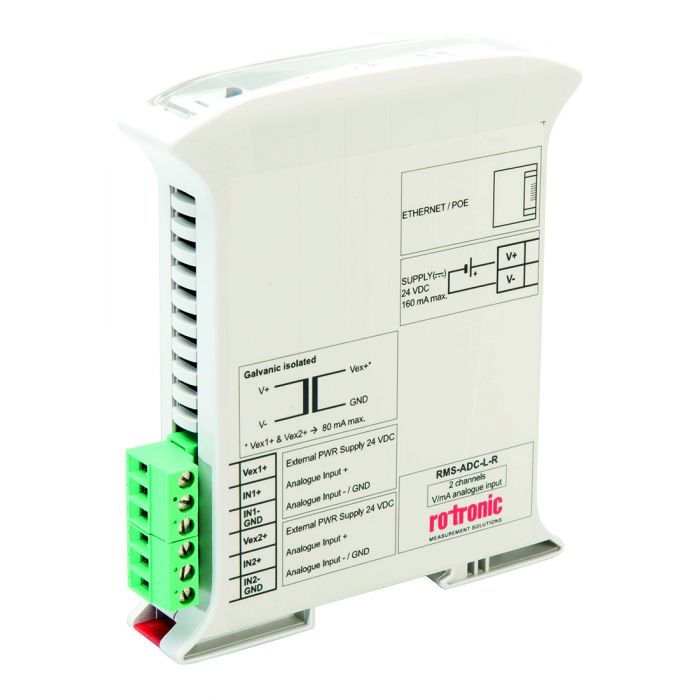RMS Applications

Cleanroom & Chamber Monitoring
Cleanrooms or clean zones are critical applications found within industries such as pharmaceuticals, medical devices, healthcare, aerospace and microelectronics. The applications are known as aseptic processing or manufacturing in a sterile environment.
All environmental conditions can be critical parameters that can affect product quality. In cleanrooms, air contamination is controlled to assure product quality and process integrity.
In all cases the human operator is by far the greatest source of microbial contamination within a cleanroom! Various other environmental conditions can also be controlled/monitored within a cleanroom such as relative humidity, temperature, differential pressure and airflow.
To define what parameters should be controlled/monitored a risk assessment needs to be carried out, reviewing the effects of each parameter on the product.

Guideline and Regulation Overview
The collection of rules and regulations governing medicinal products in the European Union, Eudralex:
- ISO 14644: Cleanrooms and associated controlled environments.
- ISO 14698: Cleanrooms and associated controlled environments – Biocontamination control.
- ISO 21501-4: Determination of particle size distribution – Single particle light interaction methods – Part 4: Light scattering airborne particle counter for clean spaces.
- EU GMP Annex 1: Manufacture of Sterile Medicinal Products.
- Guidance for Industry: Sterile Drug Products Produced by Aseptic Processing Current Good Manufacturing Practice.
- United States Pharmacopeia Chapter <1116>: Microbiological evaluation of clean rooms and other controlled environments (USP<1116>).
- Federal Standard 209E: Airborne particulate cleanliness classes in cleanrooms and clean zones. This FED-STD-209 was cancelled and superseded by the ISO 14644 standards.
- PDA Technical Report No. 13: Fundamentals of an Environmental Monitoring Program.
-
The new Annex 1
The new Annex 1, Manufacture of Sterile Medicinal Products, was released on the 22nd of August 2022 and contains much more detail in terms of the environmental requirements.
The Annex 1 mentions a contamination control strategy (CCS) that helps define all critical control points to help maintain product quality and safety. The critical control points should be monitored to optimize the detection of environmental contamination. The monitoring system will help track all non-conformities in terms of environmental monitoring excursions to help with the batch release process.
The chapter 9 is dedicated to environmental, and process monitoring that forms part of the overall CCS and typically comprises the following elements:
•Environmental monitoring: total particle.
•Environmental and personnel monitoring: viable particle.
•Temperature, relative humidity and other specific characteristics.
•Aseptic process simulation (APS).

-
ISO 14644
Both the EU GMP Annex 1 and the FDA Guidance for Industry state that clean rooms and clean air devices should be classified in accordance with ISO 14644-1.
The ISO 14644 Part 1: Classification of air cleanliness by particle concentration specifies the classification of air cleanliness in terms of concentration of airborne particles. An ISO class cleanroom defines the number of particles permitted per cubic meter of air:
ISO Class number (N) Maximum allowable concetrations (particles/m3) for particles equal to and greater than the considered sizes, shown below 1 0,2 μm 0,3 μm 0,5 μm 1 μm 5 μm 1 10b d d d d e 2 100 24b 10b d d d 3 1000 237 102 35b d e 4 10000 2370 1020 352 83b e 5 100000 23700 10200 3520 832 d,e,f 6 1000000 237000 102000 35200 8320 293 7 c c c 352000 83200 2930 8 c c c 3520000 832000 29300 9g c c c 35200000 8320000 293000 The classification:
The classification of a cleanroom may be performed periodically based upon risk assessment of the application and typically on an annual basis. When the installation is equipped with a continuous monitoring of air cleanliness, the time intervals between classification may be extended. ISO 14644-1 defines the amount of sampling locations based upon the size of the cleanroom:
-
Sampling locations related to cleanroom area
ISO Class number (N) Sampling locations related to cleanroom area Area of Cleanroom (m2) less than or equal to Minimum number of sampling locations to be tested (NL) 2 1 4 2 6 3 8 4 10 5 24 6 28 7 32 8 36 9 52 10 56 11 64 12 68 13 72 14 76 15 104 16 108 17 116 18 148 19 156 20 192 21 232 22 276 23 352 24 436 25 636 26 1000 27 >1000 See Formula (A.1) NOTE 1: If the considered area falls beween two values in the table, the greater of the two should be selected.
NOTE 2: In the case of unidirectional airflow, the area may be considered as the cross section of the moving air perpendicular to the direction of the airflow. In all other cases the area may be considered as the horizontal plan area of the cleanroom or clean zone.
How to measure particles
A light scattering airborne particle counters is the basis for determination of the concentration of airborne particles and is capable of counting and sizing single airborne particles and reporting size data in terms of equivalent optical diameter. The main sizes monitored are 0.5µm and 5µm and are shown in particles/m3 or particles/ft3 and the ISO 14644 standard specifies a flow rate of 1 cfm for counter particles that are equal or larger to 5µm. Lighthouse, Particle Measuring Systems, Beckman Coulter and Climet are just a few suppliers of particle counters.
ISO 14644-2: Monitoring to provide evidence if cleanroom performance related to air cleanliness by particle concentration
The ISO 14644-2 states that the continuous monitoring offers various benefits and a detailed view of the cleanroom performance and that a monitoring plan should be created with an appropriate risk assessment tool, implemented and maintained.
The monitoring plan will define what parameters need to be monitored as well as the number of measurement devices and their bespoke location within the cleanroom together with the alert and action levels required.
The implementation of continuous monitoring will help to achieve the ISO 14644-1.
USP<1116> is only for guidance and states the requirement of an environmental monitoring program that can be compared to the ISO 14644-2 monitoring plan.
The value of continuous monitoring is the ability to confirm consistent, high quality environmental conditions at all times and that changes can be detected as soon as they happen.
The Rotronic Monitoring System Solution
The Rotronic Monitoring System (RMS) is a GAMP©5 category 4 software combined with category 1 hardware, helping users monitor their GxP compliant applications, looking into the critical quality attributes and monitoring critical process parameters, helping focus on patient safety, product quality and data integrity and compliant to EudraLex Annex 11 and FDA 21 CFR Part 11.
Notifications
RMS allows the user to configure each measuring points with a warning (pre-alarm) and an alarm. Both the warning and the alarm can be configured with a delay (for example for differential pressure) as well as a hysteresis. Notification repetitions can be setup to ensure that critical events are not forgotten, warnings and alarms can be sent via E-Mail, SMS and telephone call.ISO 14644-2 offers quite an insight into alert and action levels as well as the generation of too many alerts. RMS will allow for specific users to adapt the various levels to ensure that optimal levels are maintained: all changes are documented within the audit trail, stating the user who made the changes, the time stamp and the values before and after the change.
Deviatation Monitoring
All level excursions are easily and quickly visible within RMS. Each event can be acknowledged and commented so that in case of an audit all relevant information is available. RMS has been built up on a digital level, so any hardware changes will also be visible within the RMS audit trail.
Data Analysis
The data analysis tool within RMS can help both during the classification phase as well as during the monitoring phase. Critical locations as well as representative locations can be defined and correlations can be made between the various parameters as well as operational state of the cleanroom (at-rest or in operation) and the cleaning phases to review the performance of the installation that might affect the cleanliness levels.
The data analysis tool can also be used to help determine the alert and action levels based upon the strategies defined within ISO 14644-2.
Calculations in RMS
RMS offers a range of additional calculations to help the users get the most out of their system. ISO 14644-2 states that for example the differential pressure limits can be delayed avoiding too frequent notifications. RMS not only offers a delay function but also a PT1 filter, the PT1 filter is a low pass filter that dams noise and spikes. The PT1 filter function is based on the system step response - an answer of a system (system output) to a heaviside step function on a system input (e. g. a 0 -> 1 step function). The mathematic model describes a System Step Response that follows an e-function. Output level(t) = 1-e^(-t/T).
Airflow and air flow velocity can also be calculated within RMS.
Calibration Management
RMS offers a calibration management tool. On one side, all devices can be calibrated within RMS, offering a complete traceability based upon the ISO 21501-4 expectations. Calibration reports can also be generated and documented within RMS.
The ISO 21501-4 requires a minimal yearly calibration, the reminder function within RMS will help define and remind when a device requires a new calibration.
Measurement Parameters
Rotronic will integrate any particle counter into RMS, via the 4…20mA output or the MODBUS TCP output.
Rotronic offer a range or wired and wireless dataloggers for all measurement parameters. Rotronic offer a range of analog and digital sensors. Third party MODBUS TCP devices and analogue devices can also be easily integrated.
Environmental monitoring: relative humidity, temperature, differential pressure, oxygen, carbon dioxide…
Compressed air monitoring: dew point, oxygen…










